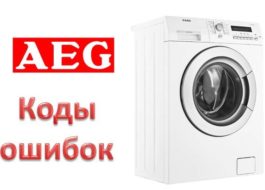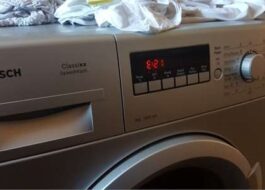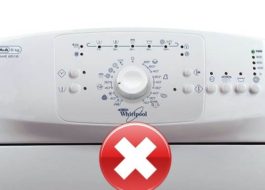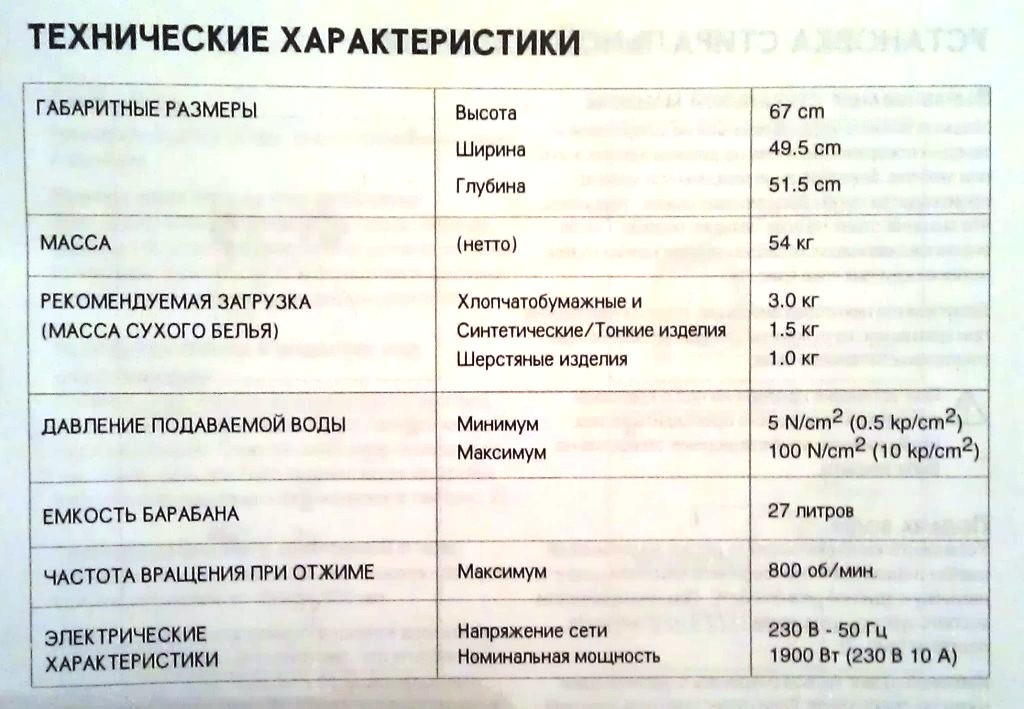Error E21 in Hansa washing machine

One of the advantages of most modern Hansa washing machines is the presence of a digital display that indicates the washing stage, the selected mode, time or other operational issues. Also, in the event of a problem, the screen signals the problem with an encrypted message, and one of the options reported by the “SOS” system is error E21. In order to correctly respond to the code that appears, you must first find out the nature of the failure. You will learn about the possible sources and extent of the problem with detailed instructions and instructions in this article.
The meaning of this code
It is not difficult to find out the meaning of the warning that pops up: just look at the instructions for the washing machine or the user manual for a specific model. If you don’t have technical papers at hand, it doesn’t matter, the list of fault codes is standard for most Hansa machines. So, with error E21, the machine reports that the drive belt has blocked due to the lack of a signal from the tachogenerator. By the way, the described problem occurs very often with this manufacturer due to engineering shortcomings. Sources of malfunction may be:
- a failed tachogenerator, including loose contacts or loose fastenings;
- broken thermal switch;
- Difficult operation of the control board.
With a valid warranty, a car with E21 must be immediately sent for service. If the warranty period has expired, then in cases with the tachogenerator and thermal switch it is not necessary to contact professional repairmen. Diagnosing who is to blame and what to do is not difficult. The main thing is to act according to the instructions.
Checking the tachometer
To try to fix the problem yourself: you need to correctly determine the cause of the problem. In most cases, error E21 is caused by a faulty tachometer. It is located directly on the engine and is “responsible” for the intensity of the drum revolutions. To get to the sensor, you will have to perform a number of actions.
- Disconnect the machine from the power supply, sewerage and turn off the water supply tap.
- Provide free access to the unit by moving it away from the wall or pulling it out of the cabinet.
- Remove the back wall by unscrewing the corresponding screws with a Phillips screwdriver.
- Remove the drive belt by pulling the rubber towards you while rotating the pulley.
- Mark the conductors connected to the motor and disconnect them.
Important! Do not neglect markings or photographs so that during reassembly you do not mix up the contacts and perform correct installation.
- Unscrew the bolts holding the engine and, loosening the engine, remove it from the housing.
- Inspect the Hall sensor attached to the motor, checking the fixing force and the existing contacts. If any of the above are loose, you need to tighten the terminals, restore connections and return to their original position.
When there are no doubts about the contacts and fastenings, we test the tachogenerator for performance. To do this, it is enough to measure the existing resistance or voltage. First of all, we check the resistance force by opening the connectors and applying the multimeter probes to the contacts. If the display shows numbers within 60-70 Ohms, then the sensor is working. Another option is to measure the current production. We switch the device to a new indicator and attach the connectors, turning the engine. The optimal value is about 0.2 Volts.
A negative result requires replacement of the tachometer.It is important not to make a mistake here, so we remove the removed part and take it to the store for clarity. The device is installed back in a similar way.
Testing the thermal switch
If the result is positive, we leave the tachogenerator alone and continue to search for a breakdown of the Hans washing machine in the thermal switch. We again disconnect the machine from all communications, open the back cover and pay attention to the heating element. Disconnect the wires going to the external thermostat and loosen the retaining fasteners. Then we remove the water heater and take out the thermistor located inside.
Now we check the sensor for sufficient resistance:
- We take a multimeter and set it to measure Ohms.
- We apply the probes to the corresponding contacts of the thermal switch.
- We fix the displayed value: at a temperature of 200 degrees 6000 Ohms.
- Immerse the sensor in hot water.
- We evaluate the results: for a working device, the figure will change downward, and at a temperature of 500 degrees it will not exceed 1350 Ohms.
If the available numbers are far from normal, you will have to replace the thermistor. To repair the sensor, you cannot just purchase a new copy, focusing on the serial number and model of the washing machine. Subsequent installation of the device and assembly of the machine will not cause any trouble: we simply proceed in the reverse order.
Successfully passed tests with a thermostat and tachogenerator indicate one thing: the control board is to blame for the E21 error that appears on the display. Here it is better not to experiment with DIY repairs, since the control module is too sensitive to third-party manipulations. Any wrong movement will lead to large-scale consequences with an expensive call to the service center.It is recommended not to try to fix the breakdown yourself, but to immediately call a qualified specialist.
Interesting:
1 reader comment
Add a comment Cancel reply
Categories
Washing machine repair


For buyers

For users

Dishwasher

















The board was soldered, the tachometer was changed, the thermal switch remains to be checked. But I don’t understand one thing, how is it related to the problem?